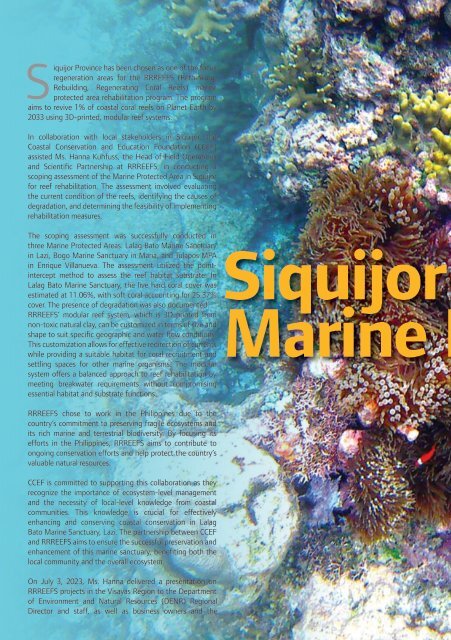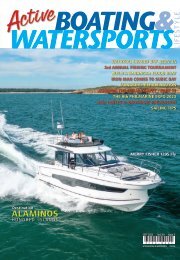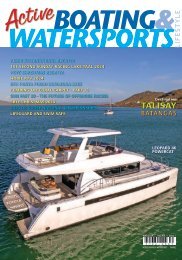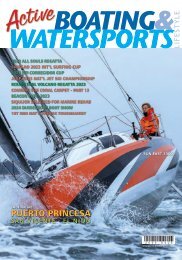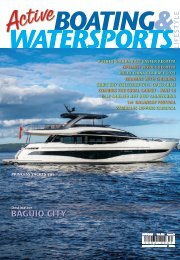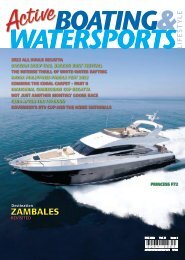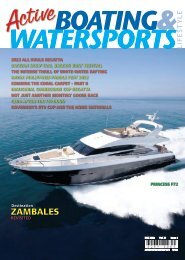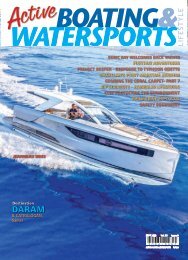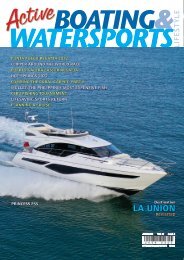You also want an ePaper? Increase the reach of your titles
YUMPU automatically turns print PDFs into web optimized ePapers that Google loves.
S<br />
iquijor Province has been chosen as one of the focus<br />
regeneration areas for the RRREEFS (Rethinking,<br />
Rebuilding, Regenerating Coral Reefs) marine<br />
protected area rehabilitation program. The program<br />
aims to revive 1% of coastal coral reefs on Planet Earth by<br />
2033 using 3D-printed, modular reef systems.<br />
In collaboration with local stakeholders in Siquijor, the<br />
Coastal Conservation and Education Foundation (CCEF)<br />
assisted Ms. Hanna Kuhfuss, the Head of Field Operations<br />
and Scientific Partnership at RRREEFS, in conducting a<br />
scoping assessment of the Marine Protected Area in Siquijor<br />
for reef rehabilitation. The assessment involved evaluating<br />
the current condition of the reefs, identifying the causes of<br />
degradation, and determining the feasibility of implementing<br />
rehabilitation measures.<br />
The scoping assessment was successfully conducted in<br />
three Marine Protected Areas: Lalag Bato Marine Sanctuary<br />
in Lazi, Bogo Marine Sanctuary in Maria, and Tulapos MPA<br />
in Enrique Villanueva. The assessment utilized the pointintercept<br />
method to assess the reef habitat substrate. In<br />
Lalag Bato Marine Sanctuary, the live hard coral cover was<br />
estimated at 11.06%, with soft coral accounting for 25.37%<br />
cover. The presence of degradation was also documented.<br />
RRREEFS’ modular reef system, which is 3D-printed from<br />
non-toxic natural clay, can be customized in terms of size and<br />
shape to suit specific geographic and water flow conditions.<br />
This customization allows for effective redirection of currents<br />
while providing a suitable habitat for coral recruitment and<br />
settling spaces for other marine organisms. The modular<br />
system offers a balanced approach to reef rehabilitation by<br />
meeting breakwater requirements without compromising<br />
essential habitat and substrate functions.<br />
Siquijor<br />
Marine R<br />
RRREEFS chose to work in the Philippines due to the<br />
country’s commitment to preserving fragile ecosystems and<br />
its rich marine and terrestrial biodiversity. By focusing its<br />
efforts in the Philippines, RRREEFS aims to contribute to<br />
ongoing conservation efforts and help protect the country’s<br />
valuable natural resources.<br />
CCEF is committed to supporting this collaboration as they<br />
recognize the importance of ecosystem-level management<br />
and the necessity of local-level knowledge from coastal<br />
communities. This knowledge is crucial for effectively<br />
enhancing and conserving coastal conservation in Lalag<br />
Bato Marine Sanctuary, Lazi. The partnership between CCEF<br />
and RRREEFS aims to ensure the successful preservation and<br />
enhancement of this marine sanctuary, benefiting both the<br />
local community and the overall ecosystem.<br />
On July 3, <strong>2023</strong>, Ms. Hanna delivered a presentation on<br />
RRREEFS projects in the Visayas Region to the Department<br />
of Environment and Natural Resources (DENR) Regional<br />
Director and staff, as well as business owners and the<br />
62


